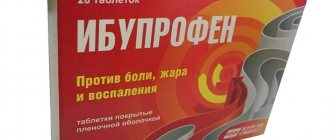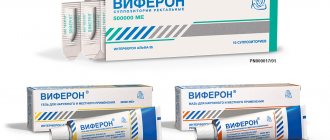Why is the ischial fiber pinched?
Nerve entrapment occurs due to weakness of the back muscles and misalignment of the vertebrae.
Common factors for lower back pinching during pregnancy include:
- exacerbation or resumption of pathologies that the woman suffered from before bearing the child;
- intense enlargement of the uterus, multiple births or polyhydramnios;
- excessive excess weight, leading to displacement of the spinal disc - in this case, compression occurs not only of large nerves, but also of small spinal roots;
- increased pressure due to a large fetus and a growing uterus - compression occurs in the area where the tube exits the spine.
Most often, a situation arises when hidden disorders of the musculoskeletal system are revealed during pregnancy. The mechanism of infringement is triggered by the following pathologies: injuries and fractures of the past, spinal hernias, osteochondrosis and inflammation of the pelvic organs. Diabetes, tumors and blood clots in large vessels can trigger the disorder. Metabolic pathologies also affect the girl’s general well-being and nervous system.
If pathological provoking factors are present, pinching occurs even in the early stages. If the cause is related only to pregnancy, pain appears only at the end of the 2nd – beginning of the 3rd trimester.
The effect of pregnancy on the musculoskeletal system
The task of hormones in the last trimester of pregnancy is to prepare a woman’s birth canal for the passage of a relatively large fetus. The ligaments soften and relax, and changes occur not only in the pelvis. Connective tissue relaxing hormones affect the spine, vein wall, knee and ankle stabilizers.
It is during pregnancy that flat feet, varicose veins, and lumbar pain syndrome often appear or worsen. In addition to hormonal imbalance, banal overload is also of great importance. The weight of the child and amniotic fluid, the center of gravity shifted forward, and difficulties during physical education create conditions that are quite unfavorable for the joints and back.
How does the sciatic nerve hurt?
Sciatic nerve pain during pregnancy is a characteristic and common problem. More than half of pregnant women report some form of back strain. But is the sciatic nerve to blame?
This nerve trunk is the largest nerve in the body. It stretches from the lower back to the fingertips. True sciatic neuritis is manifested by the following symptoms:
- Sharp or aching, burning or boring pain along the buttock or leg.
- Numbness of the foot, back of the thigh, buttocks.
- Weakness or paralysis of the foot or hip.
Not all women with back or leg pain experience a similar picture. Most often, completely different elements hurt in the back. If typical elements of neuritis are still present, you should definitely not hesitate to seek help.
Symptoms of pinched spinal nerves
Pinching of the sciatic nerve is manifested by pain in the lower back and leg.
In 90% of cases, the sciatic fiber, located closest to the uterus and internal organs in places of strong compression by the fetus, is pinched in the back during pregnancy. This condition can be suspected based on a number of additional signs. Only in exceptional cases does a woman feel nothing for a long time.
The nature of the pain is one-sided, located first in the lower back, then down to the tailbone and left or right leg. Since the ending is divided into 2 large rods, one of them is pinched. Other signs include:
- lumbago along the entire length of the nerve, pulsations in some areas;
- the symptom constantly changes location - it may hurt in the back, then in the thigh or lower;
- numbness of the toes and subsequent changes in gait are observed both with and without pain;
- burning, tingling and nagging discomfort from the affected nerve;
- it is difficult for a woman to get up from a sitting position or roll over from side to side;
- problems with the functioning of the bladder and intestines.
Sometimes patients develop a fever. Pinching of the sciatic nerve can be accompanied by both sharp and subtle symptoms.
If the pain becomes unbearable and is localized in the lower back, you should consult a doctor. This condition is sometimes associated with strangulation or damage to the kidney. The patient cannot move with this disorder. You should also visit a doctor if you experience fecal or urinary incontinence.
Diagnosis of back pain during pregnancy
Pregnancy is a delicate matter, and therefore, if pain occurs, it is imperative to consult a gynecologist, who accompanies the woman throughout the entire period of pregnancy. After collecting an anamnesis, if “non-gestational” causes of pain are suspected, the expectant mother will be referred to a highly specialized doctor (nephrologist, gastroenterologist, neurologist, etc.). In this case, research is prescribed:
- general blood and urine tests,
- blood biochemistry,
- hormones and various markers,
- smears and scrapings,
- gastroduodenoscopy,
- Ultrasound,
- MRI or computed tomography.
But X-ray irradiation during pregnancy is not indicated at all, and is usually replaced by tomography.
Danger to mother and child
In the later stages, pinching of the sciatic nerve can lead to premature birth.
Pinching of the nerve ending in the early stages often leads to termination of pregnancy. This is due to sudden contractions of the uterus. In the later stages, it can cause premature birth. In the long term, this condition worsens the mother's health after pregnancy.
In some cases, acute pain that persists until delivery leads to complications during the delivery of the baby. If necrosis of surrounding tissues develops in the affected area, the fetus is in danger due to lack of nutrition.
Among the long-term prospects for a woman’s life:
- spine pathologies;
- immobility or local loss of sensation in the leg;
- disability;
- preservation of involuntary excretion of feces and urine.
To avoid these conditions, it is important to undergo a complete examination before planning a pregnancy. Diagnostic procedures will help to find hidden diseases and cure them before pregnancy. Otherwise, the consequences can be dangerous.
Causes
- The most common cause, which is characterized by the formation of decreased thyroid function even before conception, is Hashimoto's disease (autoimmune thyroiditis). This is a process during which antibodies are formed in a woman’s body to the tissues of the thyroid gland. The initial stages of the disease are characterized, oddly enough, by an increase in the level of thyroid hormones, which is subsequently replaced by hypofunction of the organ.
- Hypothalamic-pituitary dysfunction. Since the functioning of the thyroid gland is directly under the control of hormonal regulation of the brain (hypothalamus, pituitary gland, which secretes liberins and statins, thyroid-stimulating hormone), any pathological changes in the functioning of its parts can certainly affect a woman’s hormonal background.
- Traumatic damage to the thyroid tissue, which led to its destruction.
- Congenital anomalies of the development of this endocrine organ in the form of aplasia or hypoplasia.
- Resection of part of the thyroid gland when removing tumors of this organ.
- The presence of diffuse toxic goiter.
- Application of radioiodine therapy.
- Violation of the dosage regimen of thyreostatic drugs.
- Lack of iodine in food.
- Pregnancy and hypothyroidism: the presence of a large number of pregnancies, a history of childbirth, as well as a long lactation period.
- The cause of hypothyroidism after childbirth can be a restructuring of the immune system. Since during pregnancy a woman has physiological immunosuppression (decreased immunity). After childbirth, the immune system is activated, which can serve as a starting point for autoimmune aggression towards the thyroid gland.
- Postpartum hypothyroidism can also be caused by Sheehan syndrome. This is a serious complication that is associated with necrosis of the pituitary gland due to massive bleeding and the development of disseminated intravascular coagulation syndrome (DIC syndrome).
What to do if your back gets pinched
From the very beginning of pregnancy, it is recommended to do yoga and breathing exercises.
If a violation does occur, it must be dealt with immediately after its appearance. Recommendations:
- Medicines should not be taken before consulting a doctor;
- you can use herbal preparations;
- You should call your doctor immediately after a symptom occurs;
- To avoid worsening the condition, you should avoid heavy lifting and excessive activity.
And to prevent unpleasant health, you need to wear a support bandage, do exercises, do yoga or other physical exercise for pregnant women.
Objectives of manual therapy
Manual treatment of the spine
primarily aimed at muscle recovery and pain relief. This therapy increases the mobility of joints and soft tissues, and prevents aging of the body by increasing the range of movements. As a result, the muscle corset is strengthened, posture is improved, and spinal deformities are eliminated or reduced. The problem of pinched nerves and blood vessels is solved.
Manual therapy restores cerebral blood flow and eliminates headaches and fainting. By relieving muscle tension from the spine, its blood supply and correct anatomy are restored. This allows you to eliminate hernias and symptoms of osteochondrosis. When a person returns to correct posture, his internal organs “fall into place,” which improves his general condition and makes it possible to treat a number of diseases associated with compression.
Treatment tactics
Of the painkillers, it is allowed to take No-Shpu.
In the early stages of pregnancy, you can use some medications, but in the later stages you need to give up almost all medications. This is due to the fact that the protective placenta becomes very thin and permeable before the approaching birth.
For therapy, ibuprofen and paracetamol are usually used in minimal dosages. Sometimes compresses are made with lidocaine, which is indicated in late pregnancy. “No-shpu” is prescribed if there are spasms and hypertonicity.
To prevent such conditions, it is useful for women to drink vitamins: B, E, potassium and magnesium. They are included in complex supplements for pregnant women. Insufficient content of these substances leads to various abnormalities in the functioning of muscle structures, ligaments and joints.
Among the pharmaceutical drugs, Menovazine is distinguished:
- use for rubbing 3 times a day;
- applied to the lower back, tailbone and buttock on the affected side;
- leave overnight, covered with a scarf or shawl.
Many women note that the drug helps after the first use.
Essential oils
Rosemary oil eliminates pain and cramps.
The use of concentrated esters is considered a safe and effective way to combat disorders during pregnancy. It is advisable to discuss their use with a gynecologist and an expert aromatherapist.
Oils are rubbed into the skin in the affected area, as well as into biologically active points:
- rosemary relieves spasms;
- lavender eliminates fear, stress and insomnia, helps with pain;
- chamomile reduces inflammation;
- mint and eucalyptus fight negative reactions and eliminate pain.
However, their use in the first trimester is not recommended due to the increased risk of toxicosis.
Exercise therapy for infringement
You can do gymnastics after acute pain has been relieved.
You cannot do physical exercise without a doctor’s prescription. If the gynecologist has approved physical activity, the following exercises are suitable:
- Cat. Arching and bending the back while inhaling and exhaling 10-15 times, 5-10 approaches per day.
- Squats. Perform with a straight back and bent knees.
- Walking like a soldier. Without bending your legs, take 10-15 steps on your heels and then on your toes.
If a woman has not yet worn a bandage, it’s time to think about choosing one. Use it 1-2 hours a day, but not constantly.
A pinched nerve in the lower back is a condition that can be treated without harm to the child or your own health if you consult a doctor in a timely manner.
Treatment of sciatic nerve pain
To successfully treat sciatic nerve pain, the CELT Pain Clinic uses modern techniques:
- Physiotherapy - aimed at reducing pain, improving blood circulation and relieving swelling and may include: UHF therapy, electrophoresis, laser and magnetic therapy, paraffin applications;
- Systemic therapy involves the use of non-steroidal anti-inflammatory drugs. Their use should be regulated by a doctor, since they have a number of side effects. In addition, anticonvulsants can be prescribed, which are extremely effective in treating neuralgia. In addition, drugs are used that relieve pain symptoms quickly. They can be prescribed either as tablets or as injections. Our Pain Clinic uses only modern, effective means.
- Blockades aimed at the affected area. Depending on the problem causing the pain, different medications may be used to block the pain. To control the accuracy of delivery of the medicine to the problem area, we use an X-ray unit or ultrasound machine.
Do you want to be healthy and eliminate pain attacks from your life? Contact the CELT Pain Clinic!
Make an appointment through the application or by calling +7 +7 We work every day:
- Monday—Friday: 8.00—20.00
- Saturday: 8.00–18.00
- Sunday is a day off
The nearest metro and MCC stations to the clinic:
- Highway of Enthusiasts or Perovo
- Partisan
- Enthusiast Highway
Driving directions
Contraindications to manual therapy
Contraindications are divided into absolute (complete prohibition of treatment) and relative (watchful waiting). Absolute:
- any malignant tumors, especially on the spine;
- any tuberculosis;
- Bekhterev's disease;
- osteomyelitis;
- 3-4 degree of vertebral instability;
- spinal cord stroke;
- meningitis;
- thrombosis of the vertebral arteries;
- mental disorders;
- heart attack;
- the last stages of osteoporosis, when the bones are very fragile.
Relative:
- fresh injury;
- condition after spinal surgery;
- fracture;
- decompensated diseases of internal organs.
How is manual spinal therapy done?
Manual therapy is a method of treatment using only the hands. The technique has developed over 150 years, so doctors have developed many techniques:
Manipulation technique
– these are not strong, short jerky movements that restore the mobility of the joints in the sacrum and spine.
Mobilization technique
– these are movements that promote gentle stretching of the vertebrae and tilting of the spine. As a result, swelling disappears, joints regain normal mobility, and blood circulation is restored.
Soft technique
— improves muscle tone, relieves pain, tension, heals ligaments. There are no sudden movements. Ligaments and muscles become more mobile.
We have described the basic techniques, but there are also additional ones:
- acupuncture;
- acupressure;
- craniosacral therapy;
- myofascial release;
- applied kinesiology;
- shiatsu;
- lymphatic drainage








